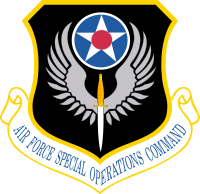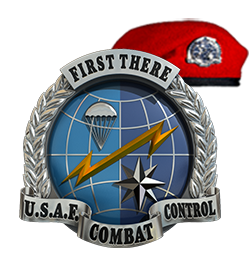USAF Combat Controllers
Air Commandos
at the Tip of the Spear
Adapted from: SHADOW WARRIORS - AIRMEN IN THE SHADOWS
by W. Thomas Smith, Jr.
The Air Force is a Major
Player in Rooting out Terrorists
 Few Americans think of Air Force “Special Tactics” Commandos as trained and equipped to fight in a ground combat environment, when in fact, airmen are often first on the ground during airborne and special operations.
Few Americans think of Air Force “Special Tactics” Commandos as trained and equipped to fight in a ground combat environment, when in fact, airmen are often first on the ground during airborne and special operations.
Like Navy SEALs, Army Special Forces, and Recon Marines, the missions of these airmen are often classified; their efforts rarely make the papers. They don't duplicate the work of other "shooters": Instead they bring a number of unique features to the special-operations mix, including men, aircraft, and battle-field wizardry.
Tech-Centered
Art and Science
 "The Air Force has always prided itself on things like high-tech information systems and space technologies, and that has carried over into its approach to special operations," Maj. General William W. Hoover (a retired two-star who currently serves as an advisor to NASA) tells NRO.
"The Air Force has always prided itself on things like high-tech information systems and space technologies, and that has carried over into its approach to special operations," Maj. General William W. Hoover (a retired two-star who currently serves as an advisor to NASA) tells NRO.
"Our ability to precision-locate things, to insert people and weapons systems, and to communicate has simply been devastating to the enemy."
Beyond the science is the art, and that's where the operators come in. Air Force special-tactics units are comprised of three elements (not including the pilots, aircrews, and support personnel). These include Combat Controllers, Pararescuemen, and Combat Weather Teams.
During the early days of the war on terror, airmen were among the first to see action. In one instance, according to General Hoover, a special-tactics team jumped into Afghanistan, secured a tower at a deserted airport, and from there, coordinated air strikes on Taliban forces less than a mile away. "This kind of capability was a new dimension the bad guys had not experienced with the Soviets," he says.
"The marriage between technology and special operators is one of the reasons we've been so successful against the enemy in Afghanistan, Iraq, and elsewhere in the world." And it's why we will continue to be.
From the Starting Line
To the Finish Line
Running the Gauntlet

Today, the scarlet beret of a combat controller is highly sought by many young Air Force recruits, but not all pack the mental or physical gear to win it. The Air Force wants "men between the ages of 18 and 27 who are athletic enough to enter the ranks" and tough enough to remain there.
All applicants for combat-controller slots must pass a rigorous Physical Abilities and Stamina Test, including swimming, running, pull-ups, sit-ups, push-ups, and flutter kicks. The test is followed by a grueling ten-week indoctrination course, affectionately referred to as "Ironman 101."
The course is characterized by constant running and calisthenics. But the most difficult portion is the "pool work." During pool work, students must demonstrate the ability to swim with a weight belt, tread water, drown-proof, and work closely with a "buddy" swimmer. The course is meant to enhance the water confidence of those who have what it takes and eliminate those who don't.
 Ironman 101
Ironman 101
Just the Beginning
Following "Ironman 101," combat-control hopefuls must attend a variety of special-operations-related schools including the Army's combat-diver school, Navy underwater-egress training, Army parachute training, Air Force survival training, and field-tactics training.
Additionally, students are trained in the use of ropes, skis, and motorcycles. Upon successful completion of the combat-training programs, the students must earn the second part of their title, "controller." To do so, they attend the Air Force's air-traffic-control school, where they ultimately become certified by the Federal Aviation Administration.
To suggest that their training is tough is an understatement. In fact, only seven men out of a total of 130 candidates in a recent Combat Control class stayed the course and graduated.
A former U.S. Marine infantry leader and paratrooper, W. Thomas Smith Jr. is a freelance journalist and the author of four books, including the 'Alpha Bravo Delta Guide to American Airborne Forces'. Reprinted with permission granted by Mr. Smith in an email sent to Gene Adcock, EOS author on November 13, 2009.

